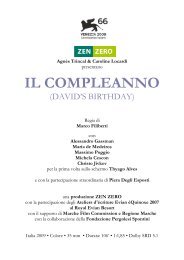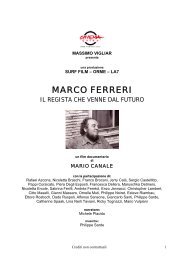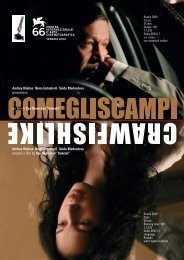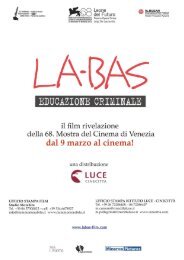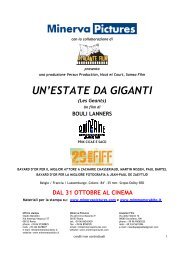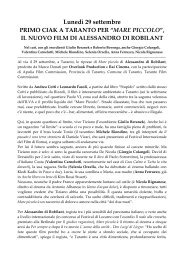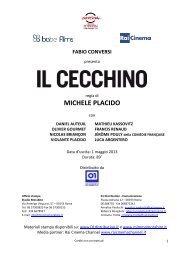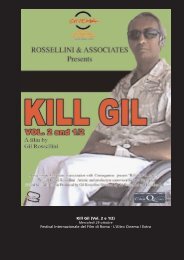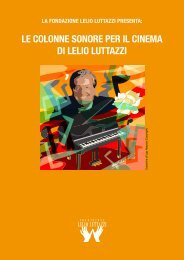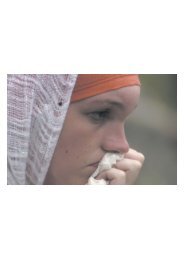Die Stille vor Bach - Studio Morabito
Die Stille vor Bach - Studio Morabito
Die Stille vor Bach - Studio Morabito
You also want an ePaper? Increase the reach of your titles
YUMPU automatically turns print PDFs into web optimized ePapers that Google loves.
connection between two shots, trying to imagine what may follow after a certain take.<br />
Its permanence comes, simultaneously, from the will to innovate but also from the<br />
acute awareness of being in the edge of time. The modernity of Portabella is not the<br />
low voltage version of it in a film library, but rather, it is a cinematographic bet of a high<br />
vitality and ethical tension, that incessantly reformulates its aesthetic and renewing<br />
program.<br />
Before the shooting of a film, any director - and, considering his attitude, any critic or<br />
any kind of aficionado who is a movie buff (if such thing still exists) - will permanently be<br />
faced to what type of shot or what type of sequence should be placed one after the<br />
other. This, being so simple, gives an enormous importance to the work of Portabella<br />
with the other narrative continuity. This is what makes him invulnerable to the passage<br />
of time: this is what makes him be an unquestionable classic of modernity.<br />
UMBRACLE – J. Rosenbaum(Extract Village Voice and Time Out – Sept. 1972)<br />
“For the second year in a row, the boldest new work I saw at Cannes was by Pedro<br />
Portabella. `UMBRACLE,’ a multi-faceted statement of political despair from Franco<br />
Spain, is far more ambitious and open-ended than last year’s “Vampyr”, and even<br />
harder to encapsulate. The eerie, spectral imagery of “Vampyr”—-slightly over-exposed<br />
footage with bleeding whites and grays, where the light almost seems to come from<br />
another age, or planet—-persists in parts of the new film, when Christopher Lee takes<br />
hallucinatory trips across Barcelona, or visits a museum of stuffed birds in glass cages.<br />
The progression shown by Pedro Portabella’s three features from Nocturno 29 (1968) to<br />
Vampyr (1970) to Umbracle (1972) reveals the birth and refinement of one of the most<br />
personal styles in the modern cinema. How do you classify these films? Are they horror<br />
movies, political statements, formal studies of sound affecting image, homages to the<br />
silent cinema, private reveries, or laconic portraits of contemporary Spain? To some<br />
extent each of Portabella’s features is all of these things.<br />
Umbracle’ how ever, is Portabella’s most powerful and achieved film to date. Here we<br />
fins a synthesis of much of the best in both previous films, joining the freedom and<br />
variety of Nocturne 29 (of which this is, in many respects a superior remake) with the<br />
rigor and simplicity of Vampyr. Yet if it is the most provocative of his films, it is also the<br />
one that most resisted analysis or paraphrase. The witty dichotomy and dialectic<br />
between sound and image in Vampyr is pushed much further, until it becomes an<br />
aggressive assault on the spectator’s unconscious narrative expectation.<br />
15



